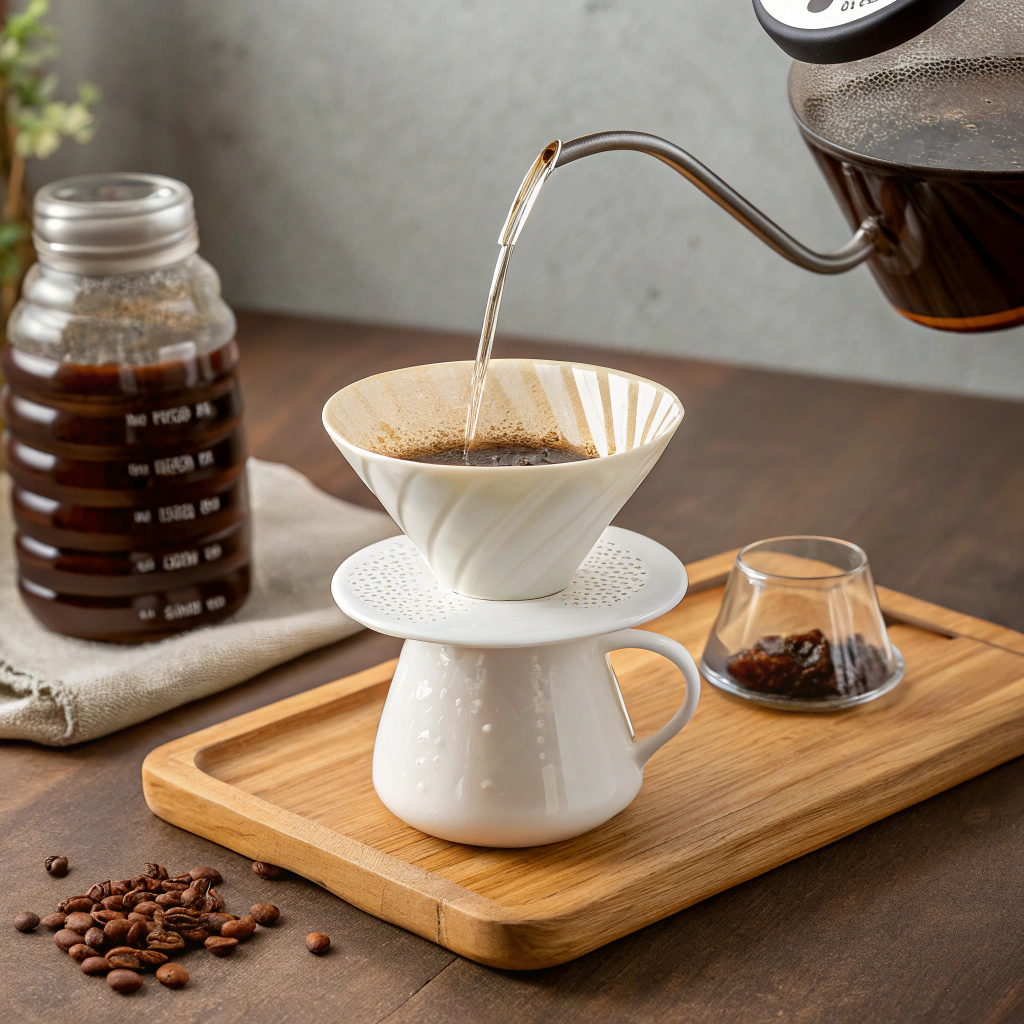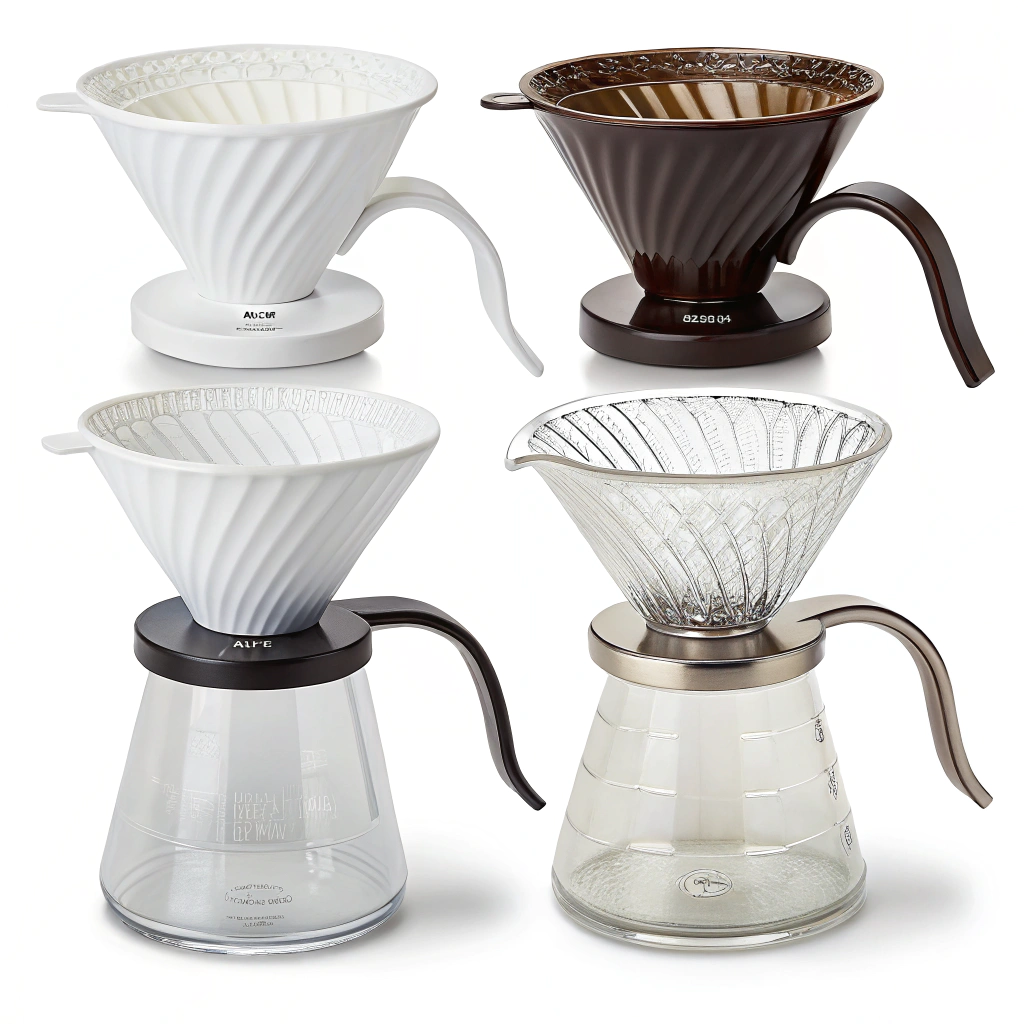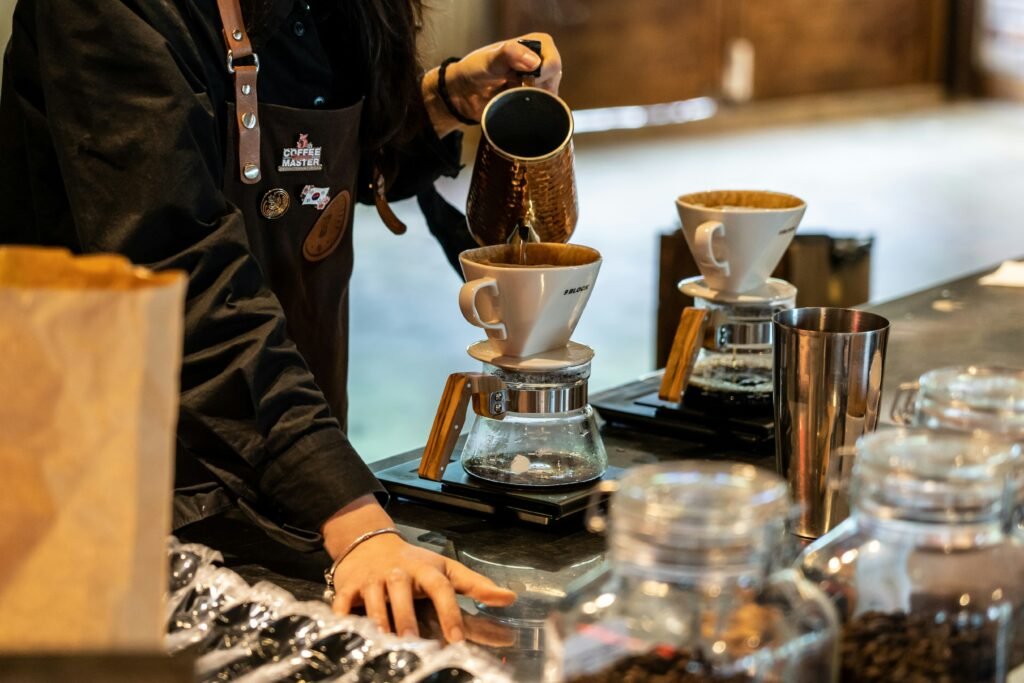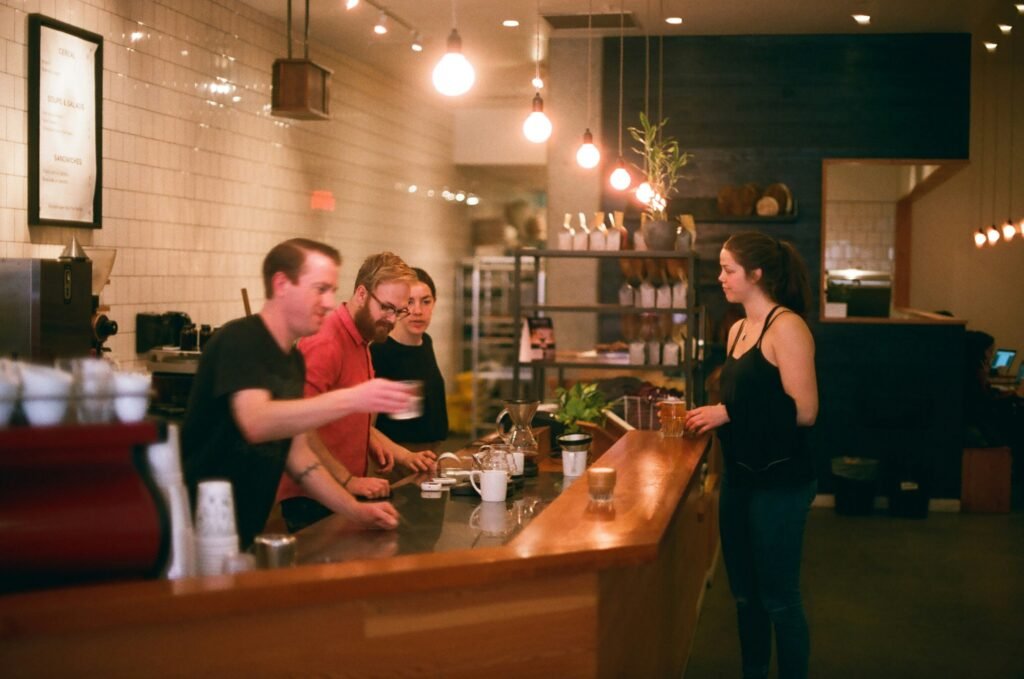Your pour-over coffee tastes inconsistent. It's frustrating when you can't get that clear, balanced flavor you love from cafes. The V60 is the key to unlocking it.
To master the V60, you must control four things: the dripper material, the spiral rib design, your coffee grind size, and your pouring technique. Perfecting these elements gives you full control over extraction for a balanced, flavorful cup every time.

The V60 looks simple. It's just a cone with a hole in the bottom. I remember when I first saw one, I thought, "How can this little thing make such a difference?" But that simplicity is exactly what makes it so powerful. It gives you, the brewer, all the control. Every little choice you make changes the final cup. So where do we start? Let's begin with the first choice you have to make: the material. It matters a lot more than you might think.
Does the material of your V60 really change the coffee's taste?
You see V60s made of plastic, ceramic, glass, and metal. How do you choose the right one? You don't want to buy something based on looks alone.
Yes, the material directly impacts your brew through heat retention. Ceramic and metal hold heat very well, keeping your brew temperature stable. Glass is a classic choice with good heat stability. Plastic is great for travel and loses less heat to the dripper itself.

When you pour hot water onto coffee grounds, you want the temperature to stay as consistent as possible. The material of your dripper plays a huge role in this. Here at SIF Coffee Tools, we work with different materials for our products every day, and we see how they behave under heat. Stainless steel is a favorite for many professional baristas, and it's a material we specialize in for our portafilters and shower screens. It’s extremely durable and offers excellent, stable heat. This is why many award-winning baristas choose metal V60s for competitions. They need that reliability. But every material has its place.
Choosing Your Dripper: A Material Breakdown
Let's look at the options so you can pick the best one for your needs. Think about how and where you'll be brewing.
| Material | Heat Retention | Durability | Best For... |
|---|---|---|---|
| Plastic | Good | Excellent | Travel, beginners, trying recipes |
| Ceramic | Excellent | Good | Home brewing, stable temperatures |
| Glass | Very Good | Fair | Watching the brew, home brewing |
| Metal | Excellent | Excellent | Professional use, competitions, durability |
Plastic is a fantastic starting point. It's forgiving and affordable. Ceramic feels substantial and looks great on a counter. Glass lets you see the entire brewing process, which can help you learn. And metal is the choice for baristas who demand consistency and a tool that will last forever.
What are the key steps to a perfect V60 brew?
You follow online recipes, but your coffee is sometimes bitter, sometimes weak. That inconsistency is the most frustrating part. You just want that perfect, cafe-quality cup every time.
The secret is a simple, repeatable process. Use a medium-fine grind. Rinse the paper filter with hot water first. Add your coffee, then "bloom" it with a little water for 45 seconds. Finally, pour the rest of your water in slow, steady circles.

The design of the V60 is genius because it helps you with extraction. The single large hole at the bottom means you control the brew time with your grind size and pouring speed. This is different from other drippers with multiple small holes, which can slow things down for you. The V60 gives you the freedom to go fast or slow. The "V" shape is at a 60-degree angle, the perfect angle for an even coffee bed. Then you have the famous spiral ribs on the inside wall. These ribs are not just for looks. They create a small gap between the paper filter and the dripper wall. This allows air to escape as the coffee expands, or "blooms." This leads to a much more even extraction and a very clean tasting cup of coffee.
The V60 Ritual: From Grind to Drip
To get consistent results, you need a consistent recipe. This is the baseline we use in our workshop when testing new accessories. It's a great starting point.
| Parameter | Recommendation | Why it Matters |
|---|---|---|
| Coffee Dose | 15-20 grams | The foundation for your coffee-to-water ratio. |
| Grind Size | Medium-Fine (like table salt) | Controls water flow speed and total extraction time. |
| Water Temperature | 96°C (205°F) | Extracts the best flavors without burning the coffee. |
| Total Brew Time | Around 3 minutes | Your target for a balanced cup. Adjust grind to hit this. |
Start with this recipe. If your brew is too fast, grind finer. If it's too slow and tastes bitter, grind coarser. Small changes make a big impact.
How can you experiment with your V60 to find your perfect flavor?
You've mastered the basic V60 recipe, but now you're bored. You hear people talk about different pouring methods or ratios, but it all sounds very complicated and intimidating.
The best way to experiment is to change only one thing at a time. Try a slightly coarser grind. Then try a different water temperature. Or adjust your coffee-to-water ratio. Each small tweak will teach you something new about your coffee.

The V60 is a tool for discovery. This is why professional coffee shops love it. It lets them take a single coffee bean and brew it in different ways to highlight different flavors. For our B2B clients, like distributors in the UAE and Europe, this is a major selling point. They can supply cafes with accessories that offer this level of control and creativity. When a barista can perfectly dial in a recipe for a new single-origin bean, they create a special experience for their customer. That's what specialty coffee is all about. You can do the same thing at home. Think of yourself as a coffee scientist, and the V60 is your laboratory.
Becoming a V60 Explorer
Ready to play with your coffee? Here are a few variables you can change and how they will likely affect your brew. Remember to only change one at a time!
| Variable to Change | How to Change It | Expected Effect on Taste |
|---|---|---|
| Coffee-to-Water Ratio | Use more coffee for the same water amount. | Stronger, more intense flavor. |
| Grind Size | Go coarser or finer. | Coarser = brighter, lighter body. Finer = fuller body, more bitterness. |
| Pouring Technique | Try one long, continuous pour. | Less agitation, often resulting in a sweeter, cleaner cup. |
| Water Temperature | Try a lower temp, like 90°C (195°F). | Less extraction, can reduce bitterness in dark roasts. |
Don't be afraid to make a "bad" cup of coffee. Every brew teaches you something. Keep a small notebook and write down what you changed and how it tasted. Soon, you'll be able to create the perfect cup for any coffee bean you buy.
Conclusion
Mastering the V60 is a rewarding journey. It's a process of understanding your tools, perfecting your technique, and experimenting to find what you love. It gives you a perfect coffee.




